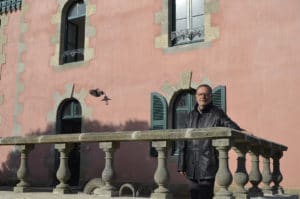" Heritage is a very complex notion. From an etymological point of view, heritage is what we receive from our ancestors. It is first of all a legacy of objects, buildings, movable property, artistic works. But heritage does not only have a material dimension. To paraphrase the poet Alphonse de Lamartine: "Inanimate objects have a soul". It is the second dimension of heritage that carries the human history of the objects that must be expressed and restored. Heritage is representative of an era, of a society, of the men and women who embodied it through their projects, their activities and their existence. "Jean Laouenan, Deputy Mayor of Loctudy in charge of finance and economic and tourist development - 2014-2020 term
After a career in the banking and finance sector, within a mutualist group, Jean Laouenan became involved in municipal action in Loctudy. After a first mandate devoted to communication and new technologies, he took over the post of deputy for finance and tourism and economic development in 2014. It is in this capacity that, in 2016, he led the museum project of the Conserverie le Gall, a complex project, at the intersection of his various professional experiences and his missions as an elected official.
The course professional
I have spent my entire career in banking and finance, working for a large French mutual group. I have worked in several companies of this group and in different regions. As is the case when you make a career in a bank, I have held many different positions. I started in the legal department when I left school, and then quickly moved on to international business, corporate finance and local development. I was then director of a departmental network of agencies. Finally, I held general management positions in Aquitaine, then in Finistère. In short, a very diverse range of jobs: without being exhaustive, legal, financing, commercial management and marketing, human resources and communication, management and social relations, and information systems. For several years, I was also president of a development capital company in Brittany. Its purpose was to help small and medium-sized enterprises to develop.
its role in the of the museum project
I was the project leader from 2015 to 2020. At the time, I was serving my second term as an elected official as deputy for finance, as well as for the economic and tourist development of the commune of Loctudy. In this capacity, I was at the convergence of missions and skills that were both complementary and sometimes contradictory. Being responsible for finances and therefore for budgetary balances and also for promoting development projects, which consume resources, is a delicate exercise. It is also a very fruitful exercise: from the outset, I had to take into account all the dimensions of the project, both those relating to the promotion of the project and those which took into account the financial constraints. This approach generated efficiency, responsiveness and clearly identified the opportunities and limitations of the project. I was lucky enough to be able to lead this project, as part of a large delegation. This meant that I had to be in constant consultation with the Mayor and the various municipal authorities. The different aspects of this project were: the legal framework, the restoration of the buildings and collections, the museography and scenography, the search for public and private funding and partnerships, and communication.
The notion of heritage
Heritage is a very complex notion. From an etymological point of view, heritage is what we receive from our ancestors. It is first and foremost a legacy of objects, buildings, movable property and artistic works. To paraphrase Lamartine who wondered about the soul of inanimate objects, the other dimension of heritage is the human history that is carried by these objects. Preserving and restoring movable and immovable property is interesting, but it is not enough. This is the challenge of museographic projects that allow us to transmit this fragment of human history, which is the bearer of realities, know-how and values of an era and a place.
Heritage is also linked to values of citizenship and identity. Today, there is a lot of debate about people's questions about their identity, their belonging to a community, in a globalised and digitalised world. The local heritage, the monuments that have crossed the centuries with the history of the people they bear, contribute to weaving roots, forging an identity and recognising oneself in a community. This brings us back to the current debate on "somewhere" and "anywhere". This concerns both "native" Loctudists who will have the desire or the opportunity to revisit a family history forged, for the most part, by agricultural and maritime activities, and also newcomers who are looking for new roots. The local history transmitted and explained in a museum project gives a reading of the territory and its inhabitants. As such, it can encourage the creation of social links and the sharing of a common destiny. To conclude, as Bismark said: "You cannot know where you are going if you do not know where you are and where you come from".
The challenges of the project
Given the importance of the project and its novelty with regard to the commune's experience and skills, I first had to convince all my elected colleagues of its interest and feasibility. This obviously required numerous and recurrent presentations in the various municipal bodies (office, commissions, municipal council) and obtaining their support, particularly that of the mayor. The reward for my commitment and my work was, without question, the unanimous adoption of the project by the Municipal Council in July 2016. Beyond the elected officials, it was also essential to get the population to support the project, a task that was not necessarily won in advance, given the still delicate perception of industrial heritage, which can evoke memories or images that are not necessarily positive locally. The creation of the Association des Amis de la Conserverie A. Le Gall Cannery (ACAL), the organisation of public meetings under its aegis, multimedia communication and guided tours of the site have all been responses to this problem. As for the public and private partners, from whom more than moral support was expected, the task was considerable and required, throughout the five years, multiple presentation files, meetings, exchanges and argumentation taking into account the dimension and the extra-communal cultural and economic issues of the project. My task was generally facilitated, I admit, by the early commitment of the DRAC Bretagne (classification of the site as a Historic Monument in 2016) and of its Architecte des Bâtiments de France for Finistère, Pierre Alexandre.
Convince, but also mobilise. To carry out such a project, it is also necessary to share it and to federate as many skills as possible, especially those that one does not possess. Some elected representatives have been particularly committed, at my side, because of their personal experience or their sensitivity to local history or heritage conservation. The best example is that of Pierre Quillivic, who, in his own words, "fell into the cauldron of the sardine canneries as a child". The son of a cannery director, a career as technical director in a large cannery in Douarn, he has an intimate and invaluable knowledge of industrial processes, know-how and the realities of work in this sector. This is an essential contribution to the staging of the buildings and collections in the museographic and scenographic project. He was therefore the man designated to take over the management of the project from me in 2020. The mobilisation also involved, through the ACAL and the Scientific and Cultural Committee, set up in 2019, the associative world (local history, in particular) and various experts (Serge Duigou, historian of the Bigouden country, Joseph Coïc, author of numerous works on fish canneries and fishing ports. Finally, I would not like to forget the action of mobilising the inhabitants and more generally the "lovers" of Loctudy through the appeal for donations, under the aegis of the Heritage Foundation.
It was also important that I secure the project on two levels: legal and financial:
- First of all, in legal terms, since it is essentially financed by public funds. The issue raised from the outset was the long-term protection of the public investment. In 2016, after the adoption of the project by the City Council, an emergency solution was found in order not to delay the start of the project and to quickly process the subsidy applications. To this end, a long lease of 40 years, without rent, was put in place. This formula met the wishes of the owner, whose attachment to the site and its future was very strong. The formula quickly proved unsuitable: difficult or limited access to public co-financing, tax problems. Therefore, in 2017, an agreement was reached with the owner for the transfer of full ownership of the buildings and collections.
- Secondly, in terms of budget, since the costs of a project of this magnitude cannot be borne by the commune's finances alone. The mayor has explicitly committed to the elected representatives and residents that the budgetary burden of the project will not exceed a certain limit (300K€). This was a difficult exercise because, by its very nature, the restoration of an old building in very poor condition reveals many surprises. Moreover, as it is a listed historical monument, there are obligations, sometimes costly, that cannot be waived. The firm Lizerand d'Auray, heritage architects, whom we chose as project manager, advised us and accompanied us in a very efficient manner to obtain the best quality/cost ratio (drawing up the calls for tender, selection of companies). The other side of budget control was the search for third-party resources. I must admit that, in this area, I tried to 'tick all the boxes', as the fashionable phrase goes. There are many contributors and I would like to thank them, because without their commitment, this project would never have been completed. For the public sector, Europe, the Ministry of Culture (main contributor), the Brittany Region, the Finistère Department, the Community of Municipalities of the Pays Bigouden Sud, and for the private sector, the Heritage Foundation, the Crédit Agricole Foundations (including that of the Finistère Regional Bank), the Fondation des vieilles maisons françaises, the Mission Bern (Loctudy project selected as a priority project in 2018), the Société Nouvelle de Mécanique de Quimperlé (restoration of the machines), Sertico de Quimper (restoration of the boiler and piping of the factory). As you can imagine, this work of "subsidy hunting" took me an enormous amount of time, since each contributor examines the request in a specific way, according to its status, its procedures, its missions and values, its budgets and decision-making methods. In this area, I was able to rely on the very valuable professional skills of Laurent Le Tartesse, head of the accounting and finance department of the Town Hall.
A final major challenge I would like to highlight is the acquisition of know-how in the heritage and cultural field. I had to familiarise myself with a whole technical vocabulary, specific to the sector in question. Do technical notions such as "collections site", "scientific and cultural project", "architectural programming" ring a bell? I admit that, at first, I did not spontaneously and concretely grasp the content and operational scope of these terms. Nor did I know that, in order to move an object from the collections, from the factory to the storerooms a few hundred metres away, I needed authorisation from the DRAC and an order from the Prefect of the Region. Nor did I know that we would have to give up insulating certain roofs, which would have meant raising the building by a few centimetres, so as not to contravene the principle of "identical restoration".
These are just a few examples of the very specific nature of the restoration and enhancement of historical heritage. There are training courses and ad-hoc professions to carry out this type of work. This is the job of museum curators, museographers and other scenographers.
At first, I thought that the municipality could be closely assisted by experts from larger public authorities. I was quickly disillusioned and had to admit that I had to rely mainly on our own resources. This is a general problem, pointed out by the Bern Mission, which handicaps small local authorities wanting to engage in heritage and cultural operations.
External resources exist, but they have to be sought out and assembled. Fortunately, we were also able to rely on the skills of specialised service providers in various fields.
The restoration operations, carried out by project managers, did not pose any real steering difficulties. The material (buildings, furniture, machines, etc.) and the specifications drawn up under the supervision of the DRAC are available.
As for the museography and scenography, this is another matter, the complexity of which I probably did not appreciate at the beginning of the project, due to my lack of experience in this field. This is without doubt the most important challenge I had to face in this dossier. As I said earlier, the mere conservation of a heritage is not enough. It has to be kept alive. The important thing is the story we want to tell and the way we want to tell it. Museography and scenography are the essential tools for bringing this story to life and transmitting it, giving it body and coherence, space by space. My discussions with Bernard Jacq, head of the Departmental Council's Heritage Department, gave me a good idea of what to expect. I sincerely thank him for that.
This story was written page by page over many months, within the scientific and cultural committee, which I have already mentioned. The alchemy of the skills, talents and passions of all involved worked wonderfully, in a friendly atmosphere, with the help of Pierre Combes, a museographer with expertise in the maritime field, and Anthony Hamon, a young scenographer with solid references (Auditorium of the Cité Mondiale du Vin in Bordeaux).
The most beautiful souvenir
I have a lot of memories, beautiful memories of this project. It's difficult to choose one in particular. I could talk about all the hours I spent with the volunteers from the Friends of the Alexis Le Gall Cannery association. They helped us a lot with this project, especially with the museography. We spent endless days - interspersed with a brunch and a drink - thinking about the best way to tell the story of the cannery. It was a very friendly and productive atmosphere that was both motivating and reassuring to complete this part of the project.
If I had to write down one specific memory, I think I would choose the day I received the response from the Brittany Region announcing that the cannery project had been selected for the "Héritages Littoraux" call for projects. I think that this event was a significant turning point in the progress of the project. It was late spring 2016. The project had started slowly the year before at the request of the Association for Maritime Culture and Heritage. But the contours of the project were still unclear and it must be admitted that no real conviction had yet emerged for the realisation of the project. The prospect had been mentioned in the municipal council but nothing more. The application to the "Heritage Coastal" call for projects came at the right time. On the one hand, it led me to write, at an accelerated pace and with all doors closed, the presentation file of the project to highlight its heritage and cultural interest and its articulation with the territorial development strategies (tourism development plan on a community scale, networking of cultural facilities in Cornouaille). On the other hand, it allowed a real recognition internally and externally (local press) of the relevance and legitimacy of the project, since it was selected among the first with the highest subsidy. In mid-July 2016, the deliberation of the City Council to take the control of the restoration and the valorisation of the Conserverie le Gall was taken. This was the official start of this adventure!


